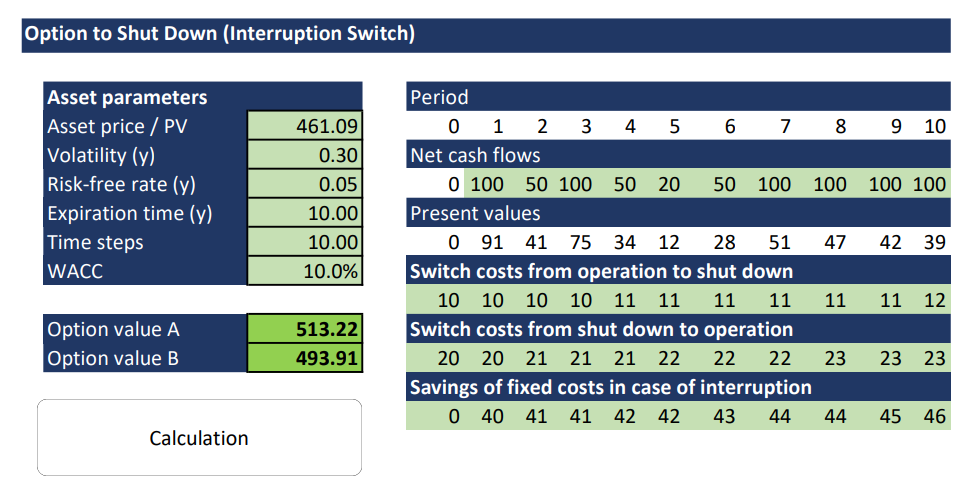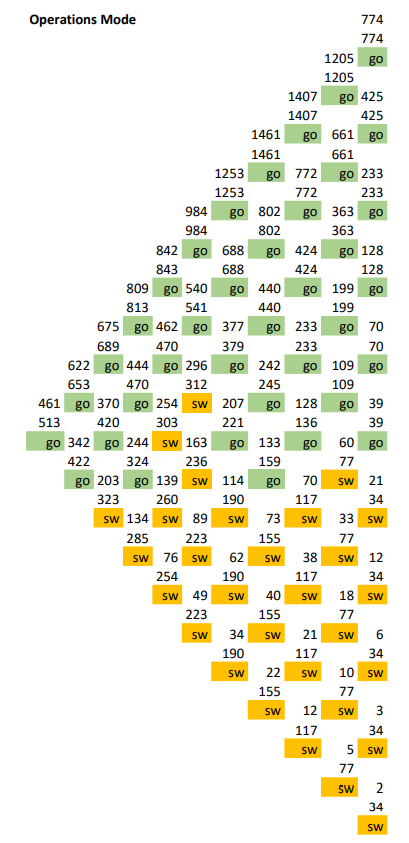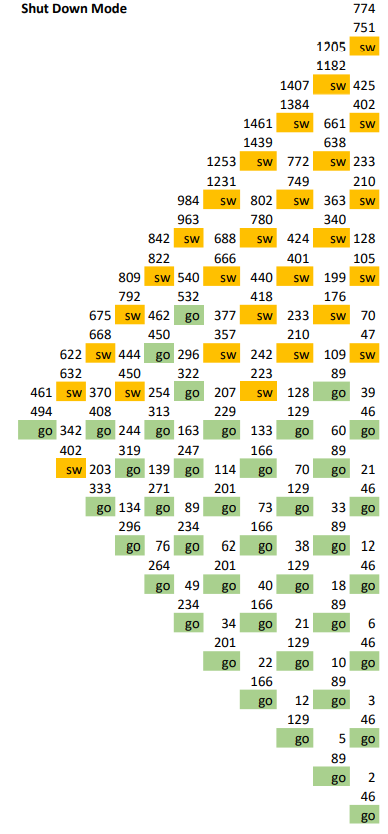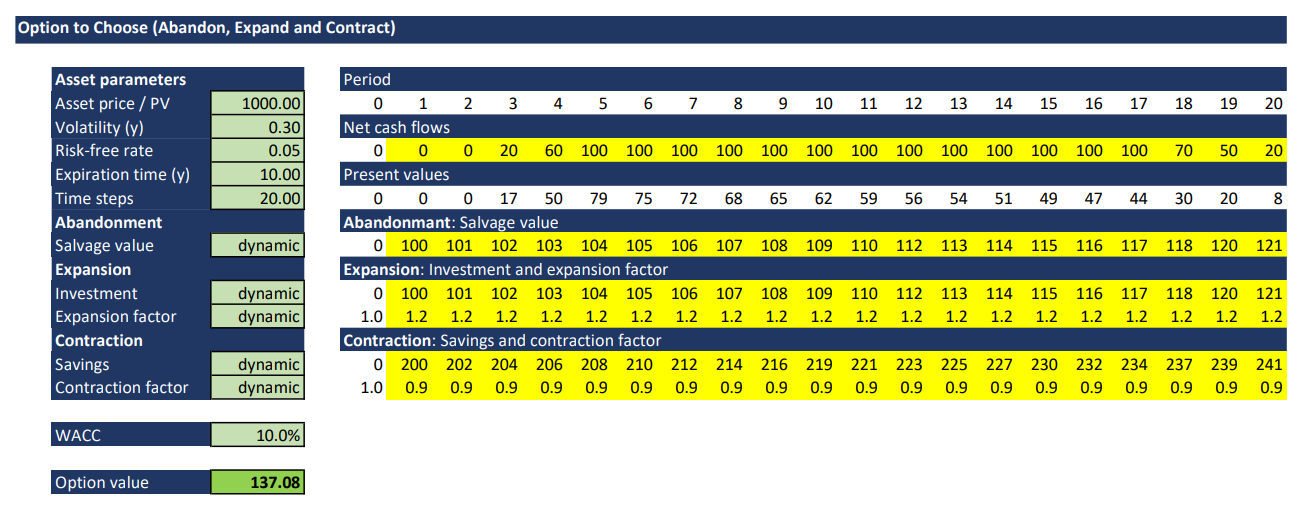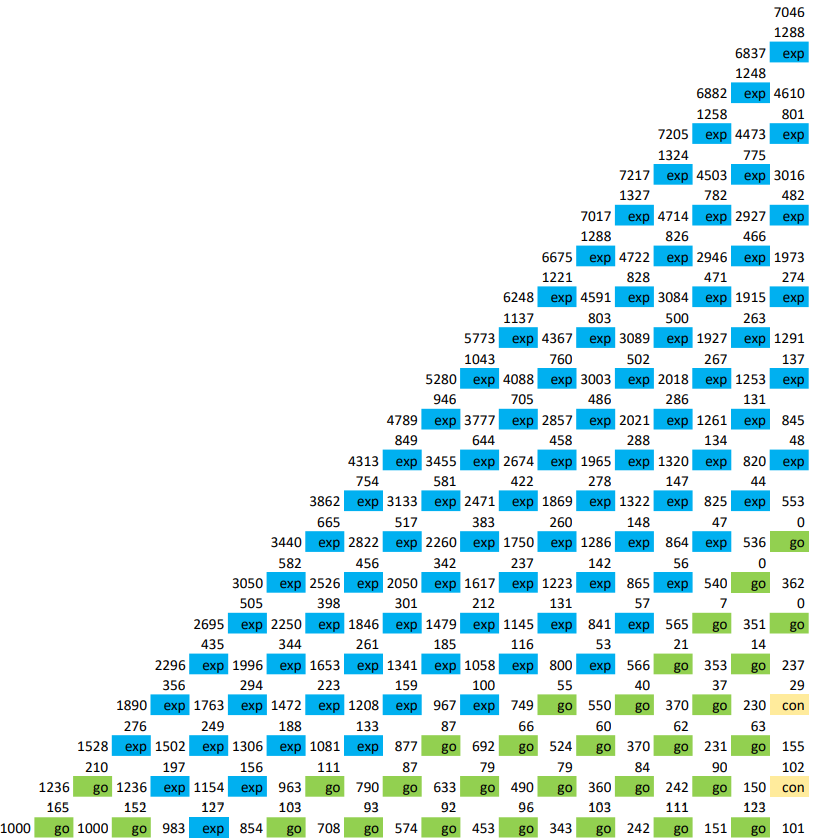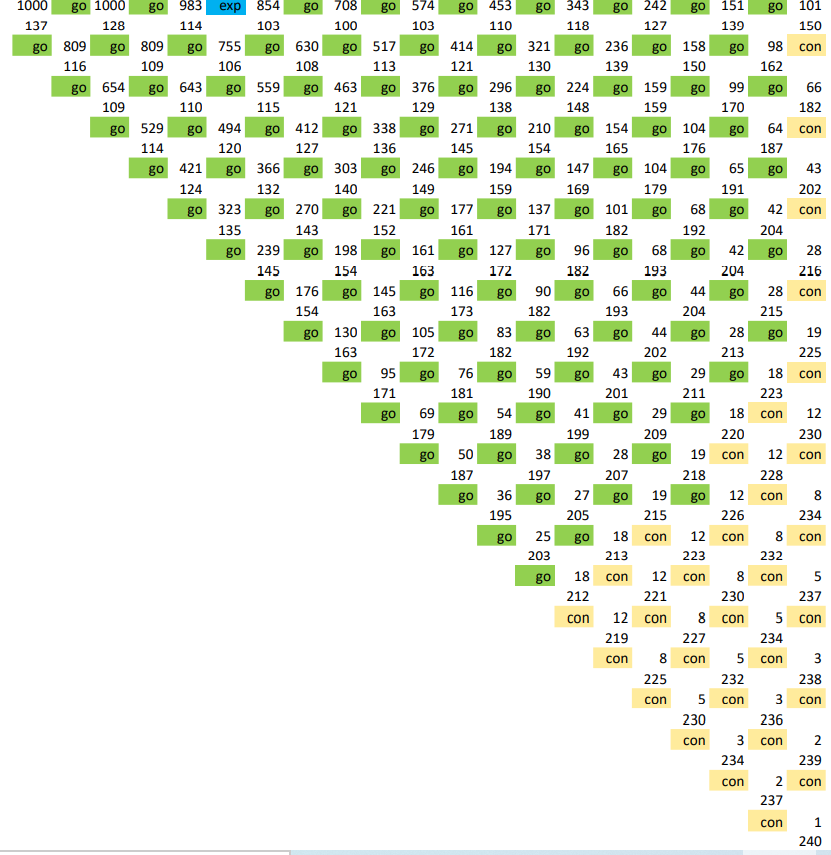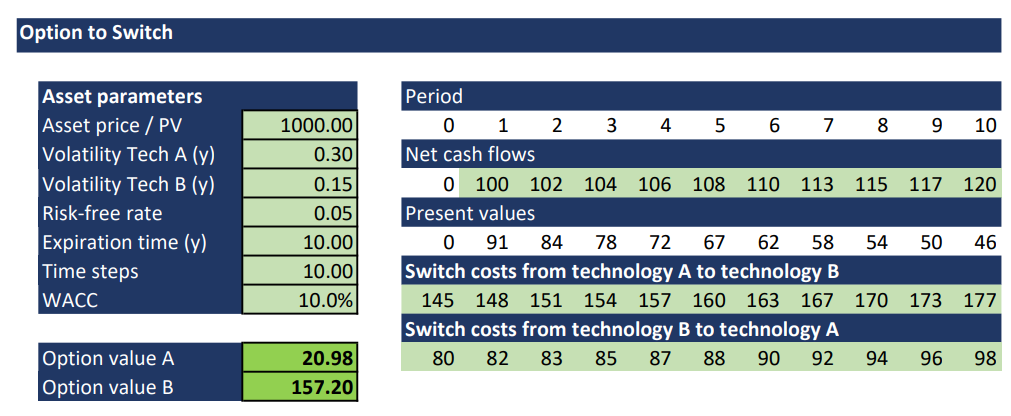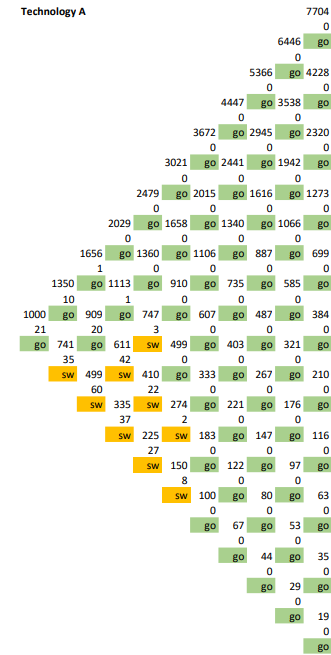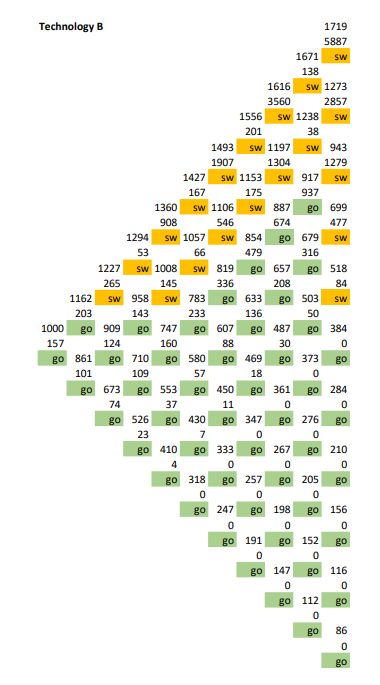Joachim Kuczynski, 15 December 2023
Introduction
A key issue in each asset valuation is the calculation of an asset’s equity beta. The preferred procedure is to take the appropriate industry segment equity beta and adjust it to your specific asset. This adjustment mainly consists of financial leverage and operating leverage. In this article I explain the procedure of operating leverage adjustment. In the following discussion we name the asset, that we want to value, our project. In general, the operating leverage of all assets can be analyzed this way. Especially it is also valid for single contribution cash flows, if you want to use the approach in the component cash flow procedure, which I am preferring in my valuations because of its accuracy.
Unleveraging
Most valuations base on average industry segment equity betas, which are adapted to the specific asset. We receive equity industry segment betas ![]() from databases in literature or in the web. In my articles concerning operating leverage and operating leverage in CCFP you can see, that the average industry equity beta for revenues and variable costs can be calculated in this way:
from databases in literature or in the web. In my articles concerning operating leverage and operating leverage in CCFP you can see, that the average industry equity beta for revenues and variable costs can be calculated in this way:
![Rendered by QuickLaTeX.com \[\beta^{ind}_{rev}=\beta ^{ind}_{asset} \left( 1-\frac{V^{ind}_{fix}}{V^{ind}_{asset}} \right)^{-1}\]](https://www.financeinvest.at/wp-content/ql-cache/quicklatex.com-cde5ba671ecc1b7b10012fd92a965c0e_l3.png)
The equity beta for revenues and variable costs are the same for the industry segment and for the considered project. That means ![]() . Hence we obtain:
. Hence we obtain:
![Rendered by QuickLaTeX.com \[\beta^{proj}_{rev}=\beta ^{ind}_{asset} \left( 1-\frac{V^{ind}_{fix}}{V^{ind}_{asset}} \right)^{-1}\]](https://www.financeinvest.at/wp-content/ql-cache/quicklatex.com-353eccdb29a981373f6cdc4bca2ce048_l3.png)
This is an important result for the component cash flow procedure. It provides the equity beta for revenues and variable cost cash flows. Using the CAPM you derive the discount rates for revenues and variable cost cash flows.
Releveraging
We can calculate the asset equity beta of the project as well:
![Rendered by QuickLaTeX.com \[\beta^{proj}_{asset}=\beta ^{proj}_{rev} \left( 1-\frac{V^{proj}_{fix}}{V^{proj}_{asset}} \right)=\]](https://www.financeinvest.at/wp-content/ql-cache/quicklatex.com-f653639fde45c24bb671287829805624_l3.png)
![Rendered by QuickLaTeX.com \[= \beta ^{ind}_{asset} \frac{1-\frac{V^{proj}_{fix}}{V^{proj}_{asset}}}{1-\frac{V^{ind}_{fix}}{V^{ind}_{asset}}}\]](https://www.financeinvest.at/wp-content/ql-cache/quicklatex.com-2e59a7922907e0e1cf633939c849f6b1_l3.png)
This is the appropriate equity beta of the considered project, if you use the project cash flow procedure. Making use of the CAPM you get the discount rates for the project’s cash flows in general with the corrected operating leverage.
Example
We want to value a simple project with infinite lifetime, a turnover of EUR 120 and costs of EUR 50 per year. The yearly profit is EUR 70. The riskless rate is 5%, the expected market return rate is 10%.
Case 1: The project has only variable costs and no fixed costs. The project has a beta of 1. The discount rate of the project (CAPM) is r=5%+1.0 (10%-5%)=10%. With infinite project lifetime we get a project value of EUR 70 / 10% = EUR 700.
Case 2: Let us assume now the EUR 50 cost per year to be fixed instead of variable. At first we discount the cash flows seperately acc. to the component cash flow procedure. Turnover still has a beta of 1 and a discount rate of 10%. We obtain a turnover value of EUR 120 / 10% = EUR 1200. The fixed costs have to be discounted with the riskless rate of 5%. Hence we get a value of EUR 50 / 5% = EUR 1000. The project value is EUR 1200 – EUR 1000 = EUR 200.
Next we apply the project cash flow procedure, which discounts all cash flows with a unique project discount rate. The beta of the project’s revenues does not depend on the fixed costs share, it is still 1. With formula described above we can calculate the project beta with the new operating leverage:
![]()
A second way to calculate the project beta is by taking the weighted average of its components’ betas:
![]()
![]()
Both approaches provide a project beta of 6. According to CAPM we get a project discout rate of r=5%+6(10%-5%)=35%. Hence we obtain a project value of EUR 70 / 35% = EUR 200, the same result as calculated with the component cash flow procedure.
But the key message of this example is that the value of the project falls from EUR 700 to EUR 200 because of higher operating leverage. This illustrated that an adaption of betas and discount rates because of operating leverage is crucial in many cases. Only in this way we can get valid results.
In more complex projects with many different kind of cash flows I prefer the component cash flow analysis. A change in one cash flow changes only the value of this cash flow. If you use the project cash flow procedure, you always have to calculate a new project discount rate at any change of one parameter.
Approximation with P&L statement
The (present) values of fixed costs ![]() , variable costs
, variable costs ![]() and revenues
and revenues ![]() cannot be found easily. But we can try to approximate them with P&L or balance sheet figures, which are available more eaysily. Let us consider eternal yearly revenues
cannot be found easily. But we can try to approximate them with P&L or balance sheet figures, which are available more eaysily. Let us consider eternal yearly revenues ![]() , yearly fixed costs
, yearly fixed costs ![]() and yearly variable costs
and yearly variable costs ![]() . The risk free rate is
. The risk free rate is ![]() and the market return rate
and the market return rate ![]() . With the expressions above we get the beta of the asset:
. With the expressions above we get the beta of the asset:
![]()
The values of fixed costs and asset are:
![]()
![]()
With that we obtain for ![]() :
:
![Rendered by QuickLaTeX.com \[\beta _{asset} = \beta_{rev} \left( 1 + \frac{\frac{\alpha R}{r_f}}{\frac{R - \alpha R - \beta R}{r_m}} \right) = \beta_{rev} \left( 1 + \frac{r_m}{r_f}\frac{\alpha}{1-\alpha-\beta} \right) \]](https://www.financeinvest.at/wp-content/ql-cache/quicklatex.com-2d2c815f15ff7b3feca76b5a7bb8316c_l3.png)
![]() and
and ![]() approximately, so
approximately, so ![]() ,
, ![]() is the ratio of annual fixed costs to annual profit. That means that you have to multiply that factor with the 2, when applying P&L figures in approximation and not present values.
is the ratio of annual fixed costs to annual profit. That means that you have to multiply that factor with the 2, when applying P&L figures in approximation and not present values.
![Rendered by QuickLaTeX.com \[C_0=\frac{\frac{(1+r)^T-d}{u-d} C_{u,t_1}+(1-\frac{(1+r)^T-d}{u-d} )C_{d,t_1}}{(1+r)^T }\]](https://www.financeinvest.at/wp-content/ql-cache/quicklatex.com-4585ecf3307b3ea36a992a134bd156a8_l3.png)
![Rendered by QuickLaTeX.com \[C_0=\frac{( (1+r)^T-\frac{pS_{u,{t_1}}+(1-p)S_{d,{t_1}}}{S_{d,t_1}(1+D)^{T}}) C_{u,t_1}}{(1+r)^T ( \frac{{pS_{u,{t_1}}+(1-p)S_{d,{t_1}}}}{{S_{u,t_1}(1+D)^{T}}}-\frac{{pS_{u,{t_1}}+(1-p)S_{d,{t_1}}}}{{S_{d,t_1}(1+D)^{T}}})}+\]](https://www.financeinvest.at/wp-content/ql-cache/quicklatex.com-0769b16c961ea4a991747ee6dec7ad23_l3.png)
![Rendered by QuickLaTeX.com \[+\frac{(\frac{{pS_{u,{t_1}}+(1-p)S_{d,{t_1}}}}{{S_{u,t_1}(1+D)^{T}}}-(1+r)^T )C_{d,t_1}}{(1+r)^T ( \frac{{pS_{u,{t_1}}+(1-p)S_{d,{t_1}}}}{{S_{u,t_1}(1+D)^{T}}}-\frac{{pS_{u,{t_1}}+(1-p)S_{d,{t_1}}}}{{S_{d,t_1}(1+D)^{T}}})}\]](https://www.financeinvest.at/wp-content/ql-cache/quicklatex.com-5b78a3049855170fe758d7f83b5e5355_l3.png)
![Rendered by QuickLaTeX.com \[r=\frac{1}{t}ln\frac{C(t)}{C(0)}=\frac{1}{t}ln\left( \sum_{i}^{} \left \frac{C_i(0)}{C(0)} exp \left( r_i t \right) \right \right)\]](https://www.financeinvest.at/wp-content/ql-cache/quicklatex.com-fb659cb84b82fa3fac2f0009b503dd4b_l3.png)
![Rendered by QuickLaTeX.com \[r\simeq \frac{1}{t}\left( \sum_{i}^{} \left( \frac{C_i(0)}{C(0)} \left( 1+ r_i t \right) \right) -1 \right)\]](https://www.financeinvest.at/wp-content/ql-cache/quicklatex.com-87db3d07482630425a989b6495027b30_l3.png)
